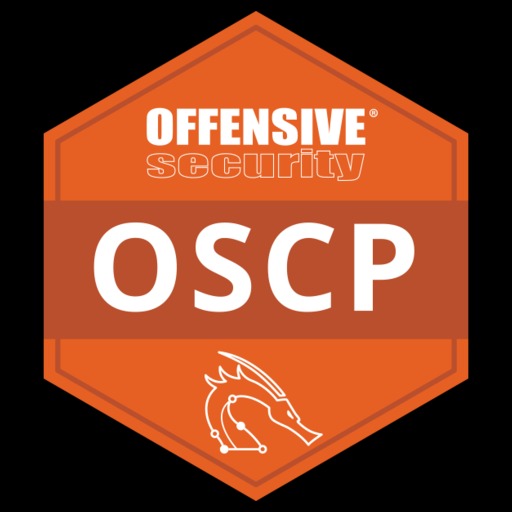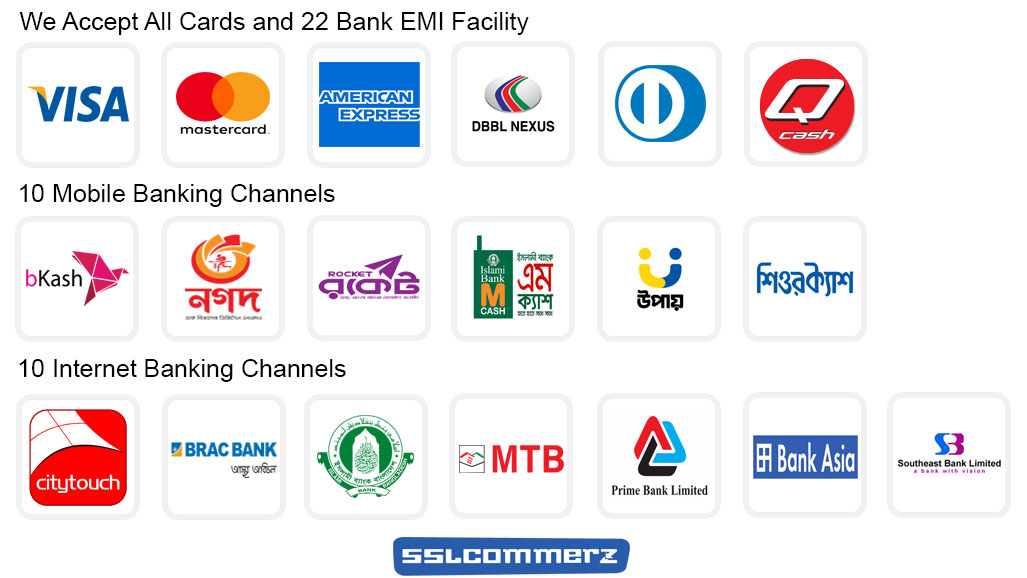OSCP Penetration Testing Certification

Penetration Testing with Kali Linux (PEN-200) is the foundational course at Offensive Security. Those new to OffSec or penetration testing should start here.
This online ethical hacking course is self-paced. It introduces penetration testing tools and techniques via hands-on experience. PEN-200 trains not only the skills, but also the mindset required to be a successful penetration tester. Students who complete the course and pass the exam earn the coveted Offensive Security Certified Professional (OSCP) certification.
Course Objectives
After completing this course, students will be able to :
- Using multiple information gathering techniques to identify and enumerate targets running various operating systems and services.
- Ability to write basic scripts and tools to aid in the penetration testing process
- How to analyze, correct, modify, cross-compile, and port public exploit code.
- Ability to successfully conduct both remote and client side attacks.
- Ability to identify and exploit XSS, SQL injection, and file inclusion vulnerabilities in web applications – Expertise in deploying tunneling techniques to bypass firewalls
Target Audience
- IT Professionals
- System Administrator
- Network Engineer
- SOC Analyst
- Pentesters
Course Pre-requisite
- Penetration Testing with Kali Linux is a foundational course, but still requires students to have certain knowledge prior to attending the online class.
- A solid understanding of TCP/IP , networking, and reasonable Linux skills are required.
- Familiarity with Bash scripting along with basic Perlor Python is considered a plus.
Course Summary
Course Fee
৳ 30,000
Training Method
Offline/Online
Total Modules
25
Course Duration
40 Hours
Total Session
20
Class Duration
2 Hours

Details Course Outlines
Module-01
Getting Comfortable with Kali Linux
- Booting Up Kali Linux
- The Kali Menu
Module-02
Finding Your Way Around Kali
- The Linux Filesystem
- Basic Linux Commands
- Finding Files in Kali Linux
Module-03
Managing Kali Linux Services
- SSH Service
- HTTP Service
- Exercises
Module-04
Searching, Installing, and Removing Tools
- apt update
- apt upgrade
- apt-cache search and apt show
- apt install
- apt remove –purge
- dpkg
Module-05
Command Line Fun
- The Bash Environment
- Environment Variables
- Tab Completion
- Bash History Tricks
- Piping and Redirection
- Redirecting to a New File
- Redirecting to an Existing File
- Redirecting from a File
- Redirecting STDERR
- Piping
Module-06
Text Searching and Manipulation
- grep
- sed
- cut
- awk
Module-07
Editing Files from the Command Line
- nano
- vi
- Comparing Files
- comm
- diff
- vimdiff
Module-08
Managing Processes
- Backgrounding Processes (bg)
- Jobs Control: jobs and fg
- Process Control: ps and kill
- File and Command Monitoring
- tail
- watch
- Downloading Files
- wget
- curl
- axel
Module-09
Customizing the Bash Environment
- Bash History Customization
- Alias
- Persistent Bash Customization
- Netcat
- Connecting to a TCP/UDP Port
- Listening on a TCP/UDP Port
- Transferring Files with Netcat
- Remote Administration with Netcat
- Socat
- Netcat vs Socat
- Socat File Transfers
- Socat Reverse Shells
- Socat Encrypted Bind Shells
- PowerShell and Powercat
- PowerShell File Transfer
- PowerShell Reverse Shells
- PowerShell Bind Shells
- Powercat
- Powercat File Transfers
- Powercat Reverse Shells
- Powercat Bind Shells
- Powercat Stand-Alone Payloads
Module-10
Packet Capturing
- Wireshark Basics
- Launching Wireshark
- Capture Filters
- Display Filters
- Following TCP Streams
- Tcpdump
- Filtering Traffic
- Advanced Header Filtering
Module-11
Bash Scripting
- Intro to Bash Scripting
- Variables
- Arguments
- Reading User Input
- If, Else, Elif Statements
- Boolean Logical Operations
- Loops
- For Loops
- While Loops
- Functions
- Practical Examples
- Practical Bash Usage – Example
Module-12
Passive Information Gathering
- Taking Notes
- Website Recon
- Whois Enumeration
- Google Hacking
- Netcraft
- Recon-ng
- Open-Source Code
- Shodan
- Security Headers Scanner
- SSL Server Test
- Pastebin
- User Information Gathering
- Email Harvesting
- Password Dumps
- Social Media Tools
- Site-Specific Tools
- Stack Overflow
- Information Gathering Frameworks
- OSINT Framework
- Maltego
Module-13
Active Information Gathering
- DNS Enumeration
- Interacting with a DNS Server
- Automating Lookups
- Forward Lookup Brute Force
- Reverse Lookup Brute Force
- DNS Zone Transfers
- Relevant Tools in Kali Linux
- Port Scanning
- TCP / UDP Scanning
- Port Scanning with Nmap
- Masscan
- SMB Enumeration
- Scanning for the NetBIOS Service
- Nmap SMB NSE Scripts
- NFS Enumeration
- Scanning for NFS Shares
- Nmap NFS NSE Scripts
- SMTP Enumeration
- SNMP Enumeration
- The SNMP MIB Tree
- Scanning for SNMP
- Windows SNMP Enumeration Example
Module-14
Vulnerability Scanning
- Vulnerability Scanning Overview and Considerations
- How Vulnerability Scanners Work
- Manual vs Automated Scanning
- Internet Scanning vs Internal Scanning
- Authenticated vs Unauthenticated Scanning
- Vulnerability Scanning with Nessus
- Installing Nessus
- Defining Targets
- Unauthenticated Scanning with Nessus
- Authenticated Scanning with Nessus
- Scanning with Individual Nessus Plugins
- Vulnerability Scanning with Nmap
Module-15
Web Application Attacks
- Web Application Assessment Methodology
- Web Application Enumeration
- Inspecting URLs
- Inspecting Page Content
- Viewing Response Headers
- Inspecting Sitemaps
- Locating Administration Consoles
- Web Application Assessment Tools
- DIRB
- Burp Suite
- Nikto
- Exploiting Web-based Vulnerabilities
- Exploiting Admin Consoles
- Cross-Site Scripting (XSS)
- Directory Traversal Vulnerabilities
- File Inclusion Vulnerabilities
- SQL Injection
- Extra Miles
- Exercises
Module-16
Introduction to Buffer Overflows
- Introduction to the x Architecture
- Program Memory
- CPU Registers
- Buffer Overflow Walkthrough
- Sample Vulnerable Code
- Introducing the Immunity Debugger
- Navigating Code
- Overflowing the Buffer
- Exercises
- Windows Buffer Overflows
- Discovering the Vulnerability
- Fuzzing the HTTP Protocol
- Win Buffer Overflow Exploitation
- A Word About DEP, ASLR, and CFG
- Replicating the Crash
- Controlling EIP
- Locating Space for Our Shellcode
- Checking for Bad Characters
- Redirecting the Execution Flow
- Finding a Return Address
- Generating Shellcode with Metasploit
- Getting a Shell
Module-17
Client-Side Attacks
- Know Your Targe
- Passive Client Information Gathering
- Active Client Information Gathering
- Leveraging HTML Applications
- Exploring HTML Applications
- HTA Attack in Action
- Exploiting Microsoft Office
- Installing Microsoft Office
- Microsoft Word Macro
- Object Linking and Embedding
- Evading Protected View
- Wrapping Up
- Locating Public Exploits
- A Word of Caution
- Searching for Exploits
- Online Exploit Resources
- Offline Exploit Resources
- Putting It All Together
- Fixing Exploits
- Fixing Memory Corruption Exploits
- Overview and Considerations
- Importing and Examining the Exploit
- Cross-Compiling Exploit Code
- Changing the Socket Information
- Changing the Return Address
- Changing the Payload
- Changing the Overflow Buffer
- Fixing Web Exploits
- Considerations and Overview
- Selecting the Vulnerability
- Changing Connectivity Information
Module-18
Antivirus Evasion
- What is Antivirus Software
- Methods of Detecting Malicious Code
- Signature-Based Detection
- Heuristic and Behavioral-Based Detection
- Bypassing Antivirus Detection
- On-Disk Evasion
- In-Memory Evasion
- AV Evasion: Practical Example
Module-19
Privilege Escalation
- Information Gathering
- Manual Enumeration
- Automated Enumeration
- Windows Privilege Escalation Examples
- Understanding Windows Privileges and Integrity Levels
- Leveraging Unquoted Service Paths
- Linux Privilege Escalation Examples
- Understanding Linux Privileges
- Insecure File Permissions: Cron Case Study
- Insecure File Permissions: /etc/passwd Case Study
- Kernel Vulnerabilities: CVE- - Case Study
Module-20
Wordlists
- Standard Wordlists
- Brute Force Wordlists
- Common Network Service Attack Methods
- HTTP .htaccess Attack with Medusa
- Remote Desktop Protocol Attack with Crowbar
- SSH Attack with THC-Hydra
- HTTP POST Attack with THC-Hydra
- Leveraging Password Hashes
- Retrieving Password Hashes
- Passing the Hash in Windows
- Password Cracking
Module-21
Port Redirection and Tunneling
- Port Forwarding
- SSH Tunneling
- SSH Local Port Forwarding
- SSH Remote Port Forwarding
- SSH Dynamic Port Forwarding
- NETSH
- HTTP Tunnelling
Module-22
Active Directory Attacks
- Active Directory Theory
- Active Directory Enumeration
- Traditional Approach
- A Modern Approach
- Resolving Nested Groups
- Currently Logged on Users
- Enumeration Through Service Principal Names
- Active Directory Authentication
- NTLM Authentication
- Kerberos Authentication
- Cached Credential Storage and Retrieval
- Service Account Attacks
- Low and Slow Password Guessing
- Active Directory Lateral Movement
- Pass the Hash
- Overpass the Hash
- Pass the Ticket
- Active Directory Persistence
- Active Directory Persistence
- Domain Controller Synchronization
Module-23
The Metasploit Framework
- Metasploit User Interfaces and Setup
- Getting Familiar with MSF Syntax
- Metasploit Database Access
- Auxiliary Modules
- Exploit Modules
- SyncBreeze Enterprise
- Metasploit Payloads
- Staged vs Non-Staged Payloads
- Meterpreter Payloads
- Experimenting with Meterpreter
- Executable Payloads
- Metasploit Exploit Multi Handler
- Client-Side Attacks
- Advanced Features and Transports
- Building Our Own MSF Module
- Post-Exploitation with Metasploit
- Core Post-Exploitation Features
- Migrating Processes
- Post-Exploitation Modules
- Pivoting with the Metasploit Framework
Module-24
PowerShell Empire
- Installation, Setup, and Usage
- PowerShell Empire Syntax
- Listeners and Stagers
- The Empire Agent
- PowerShell Modules
- Situational Awareness
- Credentials and Privilege Escalation
- Credentials and Privilege Escalation
- Switching Between Empire and Metasploit
Module-25
Assembling the Pieces: Penetration Test Breakdown
- Public Network Enumeration
- Targeting the Web Application
- Web Application Enumeration
- SQL Injection Exploitation
- Cracking the Password
- Enumerating the Admin Interface
- Obtaining a Shell
- Post-Exploitation Enumeration
- Creating a Stable Pivot Point
- Targeting the Database
- Enumeration
- Attempting to Exploit the Database
- Deeper Enumeration of the Web Application Server
- More Thorough Post Exploitation
- Privilege Escalation
- Searching for DB Credentials
- Targeting the Database Again
- Exploitation
- Post-Exploitation Enumeration
- Creating a Stable Reverse Tunnel
